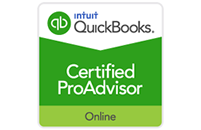Let’s face it – for every dollar of debt that you have, there’s someone out there that will try to convince you that their way is the best to pay it off. The credit repair industry – while shrinking, thanks to the availability of free online services – is estimated to generate approximately $4 billion annually in revenue. That means that these indebted people are paying billions of dollars every year… to help them figure out how to get out from under the money they already owe and its negative impact on their credit worthiness.
So if you’re getting beaten down every month with minimum payments, interest charges, and late fees, is there a single foolproof way to climb out of the hole? No. But there are some steps that are time-tested and relatively sound, which can be tweaked and changed to best fit your needs while still serving the same purpose – to get you out of debt.
Do The Bare Minimum
At the very least, you need to make the minimum payments on all of your loans, credit cards, and outstanding balances every month. Doing so will prevent you from getting hit with costly fees, increased interest rates, and damaging additions to your credit report.
So what if you can’t afford to pay the minimum on everything? Consider making lifestyle changes first – downsizing to a more affordable apartment or trading in for a cheaper car can go a long way toward giving you more room to work with when it comes to turning your finances around.
Can’t cut anymore than you already have? It may be time to get some help. Seeking out the services of a local non-profit or governmental agency aimed toward helping people in financial strife get out of trouble can be a big step in the right direction. You can also take advantage of free services at special events, such as Financial Planning Days, where professionals volunteer to offer free advice to those in need of assistance.
Even when it seems like you’re at the end of your rope, there are usually still options – such as consolidation, debt settlement or management programs, or even bankruptcy – but you should speak with a professional before trying any of these “last resort” solutions, since they can have a lasting impact on your financial stability.
Build An Emergency Fund
One of the biggest causes of American bankruptcy? Unexpected medical expenses – medical bills account for 62% of all personal bankruptcy filings. And even those with health insurance can fall victim if their health issue isn’t covered or the coverage is inadequate. But in addition to medical bills, job loss, divorce, and other unexpected expenses can all lead to a bad debt situation.
One of the best ways to combat this? Build up those savings so that you don’t have to rely on credit cards to fill the gap. The ultimate goal would be to have an emergency fund that can cover 6-12 months of living expenses, but starting with a more manageable goal – even as little as $500 or $1000 can create a buffer between you and more debt.
Create A Snowball
Have you ever heard the term “debt snowball”? It may not sound promising – after all, it may feel like your debt snowballed to its current state. But in this case, what we’re actually talking about is a snowball of payments that increases in size over time until your debt is completely gone.
Once you’re able to make all of your minimum payments and have an emergency fund to buffer you against additional debt, you’re ready to start your snowball. Step one? Putting an extra $25, $50, or $100 per month – whatever you can afford in addition to your existing expenses – toward your smallest loan or credit until it is paid off. From there, direct that same “bonus” payment – plus the minimum payment for your previous loan – toward your next smallest outstanding balance.
Sound confusing? Here’s an example:
Credit Card #1 – $1000 balance – $50/month minimum
Credit Card #2 – $2500 balance – $125/month minimum
Car Loan – $20,000 balance – $350/month minimum
Mortgage – $300,000 balance – $2000/month minimum
If you just make the minimum payment on Credit Card #1, it will take you approximately 24 months to pay it off – and you’ll pay about $175 in interest. But if you put an extra $50 toward Credit Card #1 each month, you’ll pay it off in approximately 11 months, and you’ll only pay about $80 in interest.
Beyond that, you can then put that full $100 each month toward Credit Card #2 – which will help you pay that off faster and with less interest. Once Credit Card #2 is gone, you’ll be able to tackle the car loan with an extra $225 each month, and so on until you’re completely debt free.
Keep in mind that this method doesn’t necessarily account for variances in the interest rates of different debts, and that you may want to tweak the method if you have a loan or outstanding balance with a particularly high interest rate, to prioritize that balance and avoid paying massive amounts of additional interest over time.



